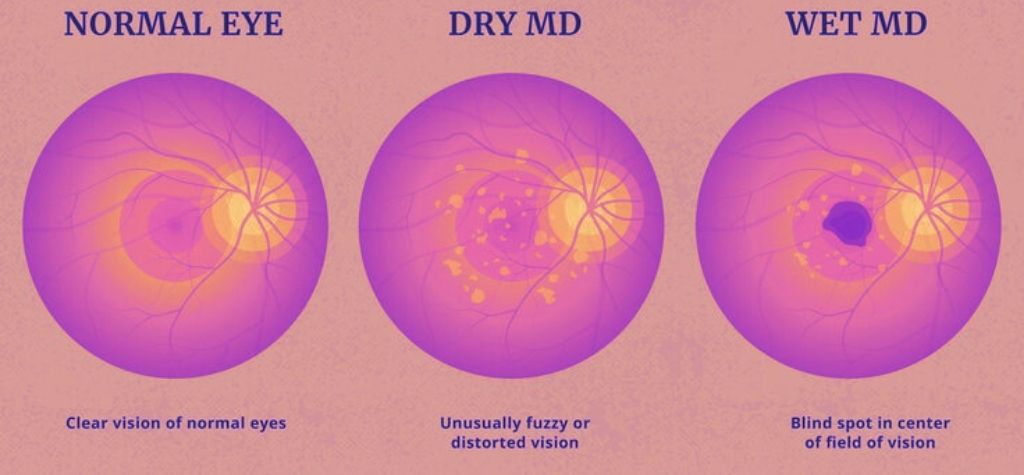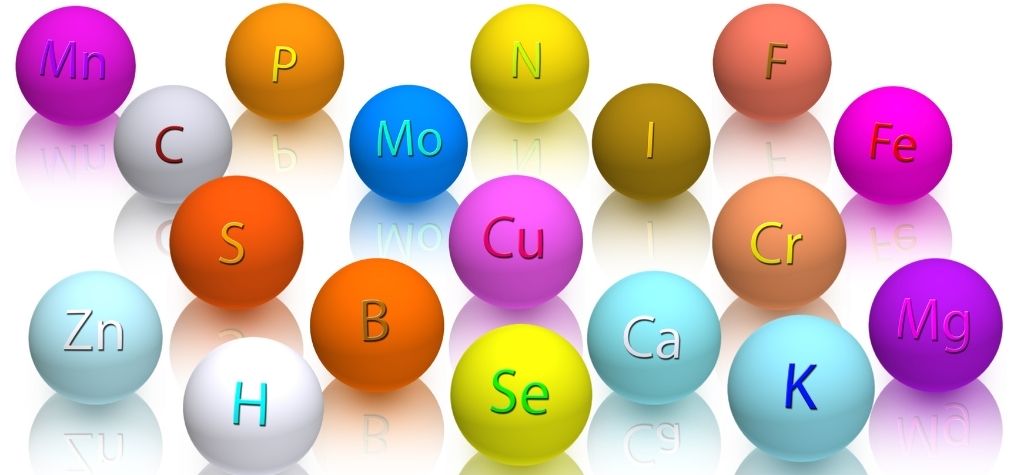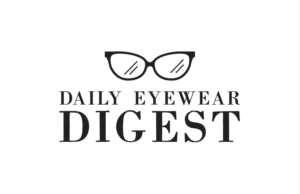Why AREDS Matters
Age‑related macular degeneration (AMD) is a leading cause of vision loss in people over 50. As the central portion of the retina (the macula) deteriorates, it becomes harder to read, drive or recognize faces. Scientists noticed that diet and nutrition could influence the course of AMD, but clinical evidence was limited. This gap led the U.S. National Eye Institute (NEI) to sponsor the Age‑Related Eye Disease Study (AREDS) in the 1990s. The initial results were groundbreaking: high doses of specific vitamins and minerals slowed the progression of advanced AMD and saved vision in people at high risk. Later, concerns about side effects and newer data prompted the AREDS2 trial to refine the formula and evaluate other nutrients.
This article explains what AREDS and AREDS2 are, who might benefit, what research says about their effectiveness and safety, and how these supplements fit into a broader eye‑health strategy. Throughout the article you’ll see citations to authoritative sources such as the NEI, the National Institutes of Health (NIH), peer‑reviewed journals and research news.
Overview of Age‑Related Macular Degeneration (AMD)

AMD occurs when cells in the macula gradually die or become dysfunctional. It comes in dry and wet forms:
- Early AMD – Small or medium drusen (yellow deposits) appear under the retina, but vision is usually unaffected.
- Intermediate AMD – Numerous medium or at least one large drusen develop; vision loss may still be minimal.
- Late/advanced AMD – The macula’s light‑sensitive cells break down (dry or atrophic AMD) or abnormal blood vessels grow under the retina and leak (wet AMD). Both forms can cause significant vision loss.
Risk factors include age, genetics, smoking, diet low in leafy greens, cardiovascular disease and obesity. Currently, there is no cure for AMD, but treatments like anti‑vascular endothelial growth factor (anti‑VEGF) injections can slow wet AMD. For dry AMD, treatment options are limited, so preventive strategies, including nutritional support, play an important role.
Birth of the AREDS Study

Purpose and Design
The original Age‑Related Eye Disease Study (AREDS) began in 1992. It was a multicenter, randomized, placebo‑controlled trial with over 4,700 participants aged 55–80. Researchers wanted to answer two major questions:
- Natural history of AMD and cataract – How do these conditions progress over time?
- Effect of dietary supplements – Can high‑dose antioxidants and minerals slow the progression of AMD or cataract?
Participants were assigned to receive either a combination of antioxidants plus zinc, antioxidants alone, zinc alone or placebo. The formulation, sometimes referred to as AREDS1, contained 500 mg vitamin C, 400 international units (IU) vitamin E, 15 mg beta‑carotene, 80 mg zinc (as zinc oxide) and 2 mg copper (cupric oxide. Copper was included to prevent copper‑deficiency anemia, a potential side effect of high‑dose zinc.
Key Findings from AREDS (2001)
- Reduced risk of progression – People at high risk for advanced AMD (those with intermediate AMD in one or both eyes or advanced AMD in one eye) lowered their risk of progressing to advanced disease by about 25 % when they took the antioxidant plus zinc combination. Vision loss was reduced by about 19 %.
- No significant benefit for early AMD – Participants with no AMD or early AMD did not gain measurable benefit.
- No effect on cataracts – The same nutrient combination did not significantly slow the development or progression of cataract.
Side Effects and Concerns
While AREDS proved that high‑dose supplementation could slow AMD progression, the trial also highlighted side effects:
- Urinary tract problems – About 7.5 % of participants assigned to zinc treatments developed urinary‑tract issues requiring hospitalization versus 5 % in groups without zinc.
- Anemia – Slightly higher rates of anemia occurred in groups taking zinc.
- Yellowing of the skin – High doses of beta‑carotene caused skin discoloration in some participants.
- Lung cancer risk – Additional cancer trials outside of AREDS found that high‑dose beta‑carotene increased lung‑cancer risk in smokers. The NEI later noted that beta‑carotene use is linked to a higher risk of lung cancer, especially among smokers and former smokers.
These concerns, combined with new evidence about other nutrients, prompted researchers to refine the formula in AREDS2.
AREDS2: Refining the Formula
Why Redesign the Formula?
After AREDS, many people—especially those who smoked—hesitated to take supplements containing beta‑carotene because of lung‑cancer risk. Researchers also wondered whether adding other antioxidants or reducing zinc would improve the formula. Therefore, in 2006 the NEI launched AREDS2, a five‑year multicenter trial involving over 4,000 participants aged 50–85 .
The trial investigated four major modifications:
- Adding lutein and zeaxanthin – These carotenoids accumulate in the macula and act as natural antioxidants. Observational studies suggested they could protect vision.
- Adding omega‑3 fatty acids (DHA/EPA) – Omega‑3s, abundant in oily fish, may support retinal health.
- Removing beta‑carotene – To reduce lung‑cancer risk.
- Reducing zinc – The original 80 mg dose was suspected of causing stomach upset; the trial compared 80 mg to a lower 25 mg dose.
Participants took one of four AREDS formulations (original; no beta‑carotene; low zinc; or no beta‑carotene plus low zinc) and one of four additional supplements (lutein/zeaxanthin; omega‑3 fatty acids; both; or placebo).
Major AREDS2 Results (2013)
- No added benefit from omega‑3s – Adding 1,000 mg of omega‑3 fatty acids did not further reduce progression to advanced AMD.
- Lutein and zeaxanthin more effective than beta‑carotene – Among participants given a formulation without beta‑carotene but with lutein/zeaxanthin, the risk of developing advanced AMD was reduced by about 18 % compared to those taking beta‑carotene. In people with very low dietary lutein/zeaxanthin at baseline, adding these carotenoids reduced risk by about 25 %.
- No harm from removing beta‑carotene – Removing beta‑carotene did not diminish the protective effect of the formula, an important finding since beta‑carotene increases lung‑cancer risk in smokers.
- Safety improvements – Participants assigned to beta‑carotene had nearly double the risk of lung cancer compared to those assigned lutein/zeaxanthin. No significant increase in lung‑cancer risk was seen with lutein/zeaxanthin.
- Zinc dose – Lowering zinc from 80 mg to 25 mg did not significantly change AMD progression, but researchers could not determine the minimal effective dose.
- No cataract benefit – Similar to AREDS, no AREDS2 combination provided overall protection against cataract, although some people with low dietary lutein and zeaxanthin experienced modest benefit.
Long‑Term Follow‑Up (2022)
In 2022, an NIH‑funded follow‑up study tracked AREDS2 participants for ten years after the original trial. Analysis of 3,883 of the 4,203 original participants showed:
- AREDS2 formula remains more effective – Substituting lutein/zeaxanthin for beta‑carotene not only lowers lung‑cancer risk but further reduces AMD progression. The group originally assigned to lutein/zeaxanthin experienced an additional 20 % reduction in progression to late AMD compared with those originally assigned beta‑carotene.
- Beta‑carotene’s risk persists – Even after all participants switched to the lutein/zeaxanthin formula at trial completion, lung‑cancer risk remained nearly doubled in those initially assigned beta‑carotene.
These findings confirm that AREDS2 is safer and more effective than the original formula.
Comparing the Formulas: AREDS vs AREDS2

The table below summarizes the key nutrient differences between the original and revised formulations. The amounts are high compared with typical multivitamins and cannot be obtained through diet alone.
| Ingredient | Role in Eye Health | AREDS (1997–2001) | AREDS2 (2013‑present) |
|---|---|---|---|
| Vitamin C | Antioxidant; regenerates vitamin E | 500 mg | 500 mg |
| Vitamin E | Protects cell membranes | 400 IU | 400 IU |
| Beta‑carotene | Antioxidant converted to vitamin A | 15 mg | None (removed due to lung‑cancer risk) |
| Copper (cupric oxide) | Prevents copper‑deficiency anemia from high zinc | 2 mg | 2 mg |
| Zinc (zinc oxide) | Cofactor for enzymes in retinal metabolism | 80 mg | 80 mg (25 mg also studied, but evidence suggests uncertain minimal dose) |
| Lutein | Carotenoid; filters blue light; antioxidant | Not included | 10 mg |
| Zeaxanthin | Works with lutein to protect macula | Not included | 2 mg |
| Omega‑3 fatty acids (DHA/EPA) | Support retinal cell membranes | Not included | Not included in final formula (studied but no benefit) |
Why High Doses?
The NEI notes that standard diet or regular multivitamins cannot provide the right mix of vitamins and minerals in the amounts needed to slow vision loss. High doses are necessary to replicate the clinical trial conditions. However, they also increase the potential for interactions with medications and other supplements. Always consult a healthcare provider before taking any high‑dose vitamins.
Who Should Consider AREDS2 Supplements?
According to the NEI and eye‑care organizations, AREDS2 supplements are not for everyone. They can be beneficial for:
- People with intermediate AMD in one or both eyes – AREDS2 can slow progression to late AMD.
- Those with late AMD in one eye only – Taking the supplements may help protect the other eye from progression.
They are not recommended for:
- People with early AMD – There is no evidence that AREDS2 prevents early AMD from progressing to intermediate stage. Instead, regular eye exams and lifestyle measures are advised.
- Individuals without AMD – Taking high‑dose supplements without medical need may cause harm or drug interactions. Beta‑carotene in older formulas increases lung‑cancer risk in smokers.
- Patients with late AMD in both eyes – AREDS2 likely won’t restore lost vision, but low‑vision rehabilitation and assistive technologies can help.
Consult Your Eye Doctor
Before starting AREDS2, talk to a qualified eye‑care professional. They can confirm your AMD stage, check for contraindications and suggest a trusted brand. Since the AREDS2 formula contains high levels of zinc, it may interfere with medications like certain antibiotics or diuretics. Your doctor will also consider your smoking history because beta‑carotene must be avoided.
Understanding the Nutrients

Each nutrient in the AREDS2 formula plays a distinct role:
Vitamin C (500 mg)
A potent antioxidant, vitamin C protects ocular tissues from oxidative stress. It helps regenerate vitamin E, supports collagen formation and contributes to healthy blood vessels. Some observational studies suggest diets rich in vitamin C are associated with lower AMD risk, but only the high‑dose combination in AREDS showed a clear benefit.
Vitamin E (400 IU)
Vitamin E protects cell membranes from lipid peroxidation. It works synergistically with vitamin C and carotenoids. High doses may increase bleeding risk in people taking anticoagulant medication, so medical guidance is essential.
Copper (2 mg cupric oxide)
Copper is included to prevent anemia caused by high zinc intake. It also supports antioxidant enzymes like superoxide dismutase.
Zinc (80 mg zinc oxide)
Zinc is a cofactor for numerous enzymes involved in retinal metabolism. In AREDS, high‑dose zinc played a significant role in reducing AMD progression. However, side effects include stomach upset and potential interactions with certain medications. Reduced‑zinc formulations (25 mg) did not show clear benefit over high‑zinc versions.
Lutein (10 mg) and Zeaxanthin (2 mg)
These carotenoids give fruits and vegetables their yellow and orange colors. They accumulate in the macula, where they act as natural blue‑light filters and antioxidants. Adding them to the formula improved protection and safety in AREDS2. Lutein/zeaxanthin may also support cognitive health and protect against cataracts in those with low dietary intake. Natural sources include kale, spinach, collard greens, corn and eggs.
Risks, Side Effects and Interactions
AREDS2 supplements are potent and should be treated like medication. Consider the following risks:
- Digestive upset – Large doses of zinc can cause stomach pain or nausea. Some people may experience constipation or diarrhea.
- Urinary tract issues – In the original AREDS, 7.5 % of participants taking zinc had urinary‑tract problems requiring hospitalization.
- Anemia – High zinc may interfere with copper absorption, leading to anemia.
- Drug interactions – Zinc can interact with antibiotics (e.g., tetracyclines, quinolones), diuretics and penicillamine. High doses of vitamin E may increase bleeding risk, particularly if you take warfarin or aspirin.
- Smoking history – Never take beta‑carotene if you currently smoke or have smoked in the past; choose AREDS2 instead.
- Pregnancy and medical conditions – The high doses used in AREDS/AREDS2 haven’t been studied in pregnant women. People with liver disease, kidney disease or certain genetic conditions should consult doctors.
If you experience side effects, stop the supplements and contact your healthcare provider. Sometimes splitting the dose between morning and evening can reduce stomach upset.
Diet and Lifestyle: Beyond Supplements

Supplements are not a cure and cannot replace a healthy lifestyle. Here are evidence‑based strategies to protect eye health:
- Eat a balanced, colorful diet – Leafy greens (spinach, kale), orange/yellow vegetables (sweet potatoes, carrots), berries and citrus fruits provide natural antioxidants. Fatty fish (salmon, sardines) supply omega‑3s.
- Quit smoking – Smoking doubles or triples AMD risk and is linked to cataract formation. Quitting smoking offers the single most effective lifestyle change to preserve vision.
- Maintain healthy blood pressure and cholesterol – Cardiovascular health is intimately linked to retinal health. Regular exercise, a heart‑healthy diet and medication if necessary can reduce AMD progression.
- Protect your eyes – Wear sunglasses that block 100 % of UVA and UVB rays. Use safety glasses when needed.
- Control body weight and blood sugar – Obesity and diabetes increase AMD risk. Weight management through diet and exercise is critical.
- Regular dilated eye exams – Early detection of AMD is key. The NEI recommends that people over 60 get a dilated eye exam at least once a year. An eye‑care professional can monitor changes and discuss appropriate supplements.
These lifestyle changes complement the AREDS2 regimen and promote overall health.
Frequently Asked Questions
1. Can I get enough lutein and zeaxanthin from food instead of supplements?
A healthy diet rich in leafy greens and colorful produce supplies some lutein and zeaxanthin, but the AREDS2 doses (10 mg lutein and 2 mg zeaxanthin) are much higher than typical dietary intakes. In addition, the clinical benefits were observed only when these carotenoids were taken alongside other ingredients at specific doses. Supplements provide a concentrated and consistent supply.
2. Does AREDS2 cure AMD?
No. AREDS2 slows the progression of intermediate AMD to advanced stages and reduces the risk of vision loss. It does not cure AMD or restore lost vision. Regular eye exams and healthy lifestyle choices remain essential.
3. Should people with cataract take AREDS2?
Neither AREDS nor AREDS2 showed overall protection against cataract progression. People with cataract should discuss other nutritional or surgical options with their ophthalmologist.
4. Is omega‑3 supplementation unnecessary?
AREDS2 found no additional benefit from adding omega‑3 fatty acids. However, omega‑3s are still important for cardiovascular and brain health. You can obtain them through diet or separate supplements if recommended by your doctor.
5. What brand should I use?
Look for products labeled “AREDS2 formula” that list the exact amounts of each nutrient. Check the ingredients to ensure there is no beta‑carotene, particularly if you smoke or used to smoke. Ask your eye‑care professional for recommended brands.
6. How long should I take AREDS2?
Most eye‑care providers recommend taking the supplements indefinitely once you have intermediate AMD or late AMD in one eye. Long‑term follow‑up studies show continued benefits and acceptable safety. Nonetheless, regular monitoring and periodic reassessment with your doctor are essential.
7. Do genetic factors influence response to supplements?
Some researchers have suggested that certain genetic variants (e.g., CFH or ARMS2) might influence how people respond to AREDS nutrients. However, a 2014 analysis found no clinically significant association between common AMD risk genotypes and response to supplements. Genetics may influence baseline AMD risk but does not yet guide supplementation.
Conclusion: Vision Preservation Requires a Multi‑Faceted Approach
The AREDS and AREDS2 trials changed the landscape of AMD treatment. For the first time, a combination of vitamins and minerals was shown to slow the progression of AMD, preserving vision in millions of people. AREDS established that high‑dose antioxidants plus zinc can reduce progression by about 25 %. AREDS2 refined the formula by removing beta‑carotene and adding lutein/zeaxanthin, eliminating lung‑cancer risk while providing even better protection. Long‑term follow‑up confirms that the revised formula remains safe and effective.
That said, AREDS2 is not a cure and is not suitable for everyone. It benefits individuals with intermediate AMD or late AMD in one eye, but it doesn’t prevent early AMD or cure advanced disease. Side effects and drug interactions mean that you should consult your eye doctor before starting supplements.
Ultimately, protecting your eyesight involves more than pills. Healthy eating, quitting smoking, regular exercise, eye protection and dilated eye exams are all vital pieces of the puzzle. By combining evidence‑based supplementation with these lifestyle strategies, you can give your eyes the best chance of staying healthy as you age.

